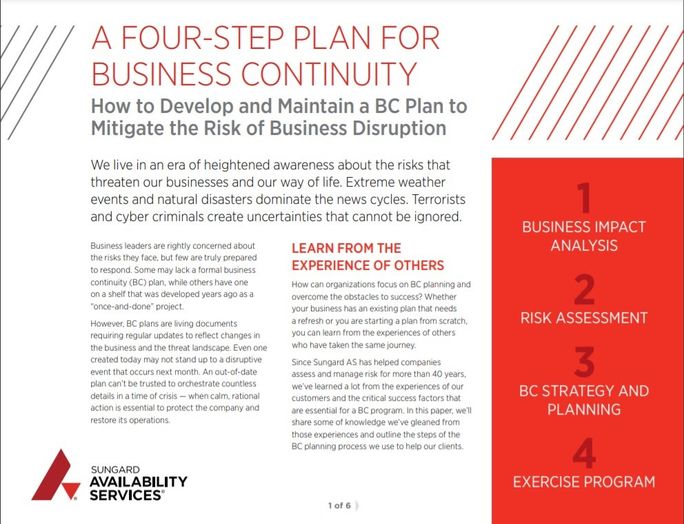Generating a constant flow of marketing qualified leads is part and parcel of every marketer’s job.
But generating leads, let alone quality ones, is a tough nut to crack.
How to attract the person standing in the middle of your funnel exposed to multiple options?
How can you deepen the connection and build trust in the mind of your prospects?
White papers are one such lead-generating asset that provides value to your customers and aids them in making decisions.
A helpful white paper builds your authority and thought leadership in your industry along with generating qualified leads.
According to B2B marketing benchmarks, 71% of companies prefer white paper as one of the best marketing collateral to impact decisions.
But not every white paper is worth its salt. A white paper needs to be insightful, unique, informational, and inspiring enough to cut through the noise.
In this article, we will break down 8 white paper examples from different industries to see what it takes to make a winning white paper.
Let’s get inspired!
What is a White Paper?
A white paper is long-form content that provides an in-depth solution, analysis, or opinion to a complex problem that your target audience faces, backed with charts, data, surveys, and examples. They carry an authoritative tone, making them a great resource to prove your thought leadership in the industry.
One should ask, But isn’t that what an ebook does? Yes, the lines are blurry, but there is a difference.
Ebooks generally cover a broader topic, whereas white papers focus on putting opinions over a specific issue with factual data and research. White papers are more in-depth and technical.
For example, if you want to explain “What is Data Privacy,” go write an ebook, but to explain “State of Data Privacy in 2021 + Key trends,” create a white paper.
Now let’s jump to the breakdown of a few white paper format examples.
8 Excellent White Paper Examples + Key Takeaways
1. Cisco – Networking and your competitive edge white paper

Cisco is a well-known name, but the domain it works in is not.
Cisco develops and provides networking hardware, data security services, telecommunications equipment, and other high-technology services and products.
So to explain problems of such complex domains to the decision-maker of small or big businesses, Cisco has to make a technical yet easily understandable white paper.
And Cisco did just that with its “Networking and your competitive edge” white paper. The white paper explains the importance of having a robust, secured, and state-of-art network edge.
To avoid making the content text-heavy, they have balanced the white paper with infographics on each page. Plus, the visual tone of the whole white paper is totally in sync with the topic at hand.
Key takeaways from Cisco’s white paper
- Create a white paper that can help people understand even a complex topic in the simplest way possible.
- Create your white papers with the balanced use of texts and graphics.
- Pull out quotes, essential statistics, and critical pointers for skim readers.
2. Hitachi Vantara – Hitachi Content Platform Architecture Fundamentals

Hitachi is active in different areas of the IT sector but mainly offers storage solutions for enterprises and midsize organizations.
The Whitepaper “Hitachi Content Platform Architecture Fundamentals” explains how Hitachi’s content platform is an ideal ecosystem to support existing content-centric applications, newer cloud use cases, and workloads for businesses of all sizes.
The white paper is service-centric and focuses on piquing the interest of buyers in the decision-making process.
Key takeaways from Hitachi’s white paper
- If your white paper is content-heavy, then structure it into different sections for better readability.
- Clearly explain the benefits of your product, service, or methodology in overcoming the problems your audience is facing.
3. ADP – 5 steps to rid your small business of payroll stress

ADP is a big name in the payroll software and HR services industry. Their target audience consists of small and medium-sized businesses that don’t have the luxury to set up in-house HR departments to streamline payroll processes.
It shows that the company has researched, defined its goals, and then came up with the White paper “5 steps to rid your small business of payroll stress”.
This business white paper example has succinctly covered the major points with the balanced use of words and graphics. Moreover, they have also used a case study to bolster their claims.
Key takeaways from ADP’s white paper
- Put on your explore glasses and start defining your audience. Who are they? What are their challenges? Which platform do they use the most? Zeroing down on your audience will aid you in finding the topics that your audience loves and creating a lead-generating white paper.
- Talk about your accomplishments. Share successful case studies of previous clients or product users.
4. HSBC – Are equities overvalued?

The finance white paper from HSBC is a perfect example of thought leadership. Using the in-house generated data, HSBC nicely explained the reasons for the overvaluation of the equity market and why asset allocation could be the solution to it.
The subtle use of author’s designation with their names on the main page adds more credibility to the white paper.
Key takeaways from HSBC’s white paper
- Write an intriguing title that captivates your audience, piques their curiosity, and entices them to read further.
- Get subject matter experts to write or contribute to the white paper to exhibit more authority and build trust in your audience’s minds.
- Use graphs and research to validate your opinions.
5. Aetna – The forgotten killer: Cardiovascular disease
I know the title “The forgotten killer: Cardiovascular disease” is a little morbid, but it is of great value to Aetna, a leading health insurance company, to evoke emotions in their audience and show where they stand.
They frequently release white papers to push health care and disease prevention information to aware people. This works as top-of-funnel content for the insurance company.
This white paper sheds light on the growing cases of Cardiovascular disease (CVD) worldwide and how countries are innovating technologies to nip the bud in it.
When it comes to health-related content, people prefer credible information that they can trust. So to make the information more trustworthy, the white paper has given citations to authentic sources in the footer.
Key takeaways from Aetna’s white paper
- Write captivating intros and outros that entice your readers to scroll down the pages.
- Always cite the sources from where you have taken the ideas or data to incorporate in your white paper. Documenting the sources adds extra credibility to your articles and helps readers learn more about the topic.
6. Sungard AS – A Four-Step Plan For Business Continuity

Sungard AS is a well-known name in the risk assessment and management sector. They have also established the same authority in the intro of the white paper “A four-step plan for business continuity.”
The white paper explains the need to map out a business continuity plan to avoid the unprecedented threats and crises that can affect the future growth of your business and lead to an overall shutdown.
We can see that the white paper topic is rather generic; hence the company has the unique advantage to target all walks of businesses at once.
Key takeaways from Sungard AS’s white paper
- There is no written rule that white papers need to be boring. You can make things interesting by creating a proper flow of information. Start with conflicts/problems; Talk about solutions; Introduce your brand as a tool to get things done efficiently.
- Ensure the methodology you share with your audience is adequately segregated in steps and backed up with infographics.
- In the end, we all are looking for more sales. So, create a separate CTA page talking about the benefits of your product/service to drive people on the cusp of making a decision.
7. Google – Google Cloud Security and Compliance White paper

The Google Cloud Security and Compliance Whitepaper is a text-heavy 28-page explainer about the efficiency of Google cloud products and services in keeping the data of any workspace safe and secure.
The white paper checks all the marks to be a well-informed and readable article with subtle color fonts, imagery, and simple language. Still, it is a time-consuming read for multiple people. So, why are we discussing it then?
The real strength of this white paper example lies in how Google repurposes the information into numerous content formats for different audiences.
Look at the infographic Google made from the white paper to make the information accessible to the readers with time constraints.
A key takeaway from Google’s white paper
- Creating a white paper is just the beginning. Further, you need to repurpose it using different content formats, such as infographics, charts, graphs, checklists, videos, and more.
8. UBER – Fast-Forwarding to a Future of On-Demand Urban Air Transportation

Wouldn’t it be fantastic if you could book a private aircraft to arrive at your doorstep and reach your office in it, dodging all the morning rush?
Well, soon, you will be able to do that with Uber’s VTOL aircraft.
And the testament to that statement is written in Uber’s white paper – Fast-Forwarding to a Future of On-Demand Urban Air Transportation. The white paper weaves a great story to deliver the need for VTOL in urban cities and mention all the barriers to achieving the feat.
Using this white paper, Uber not only promoted the idea of future transportation but also booked itself as the principal authority in the making of it.
Moreover, to make the report more credible, they have mentioned reviewers from NASA, MIT, and other elite organizations that provide air transport.
Key takeaways from Uber’s white paper
- Create white papers that talk about future trends and innovations in your industry to establish yourself as a thought leader.
- Add names of distinguished subject matter experts to support the credibility of your opinions.
Conclusion
A white paper is an essential part of your marketing arsenal. It helps you educate your readers, build trust, generate qualified leads, and even help you get sales.
Hence, it is important that you creatively explain the benefits of your product, service, or methodology in overcoming your audience’s problems.
Moreover, ensure that the white paper you create solves a complex problem in an easy language without being too dull. Nobody likes a boring read. Incorporate infographics, charts, graphics, footnotes to make your White paper enjoyable.
Use the key insights mentioned in the blog to create a thought-provoking and lead-generating whitepaper.


